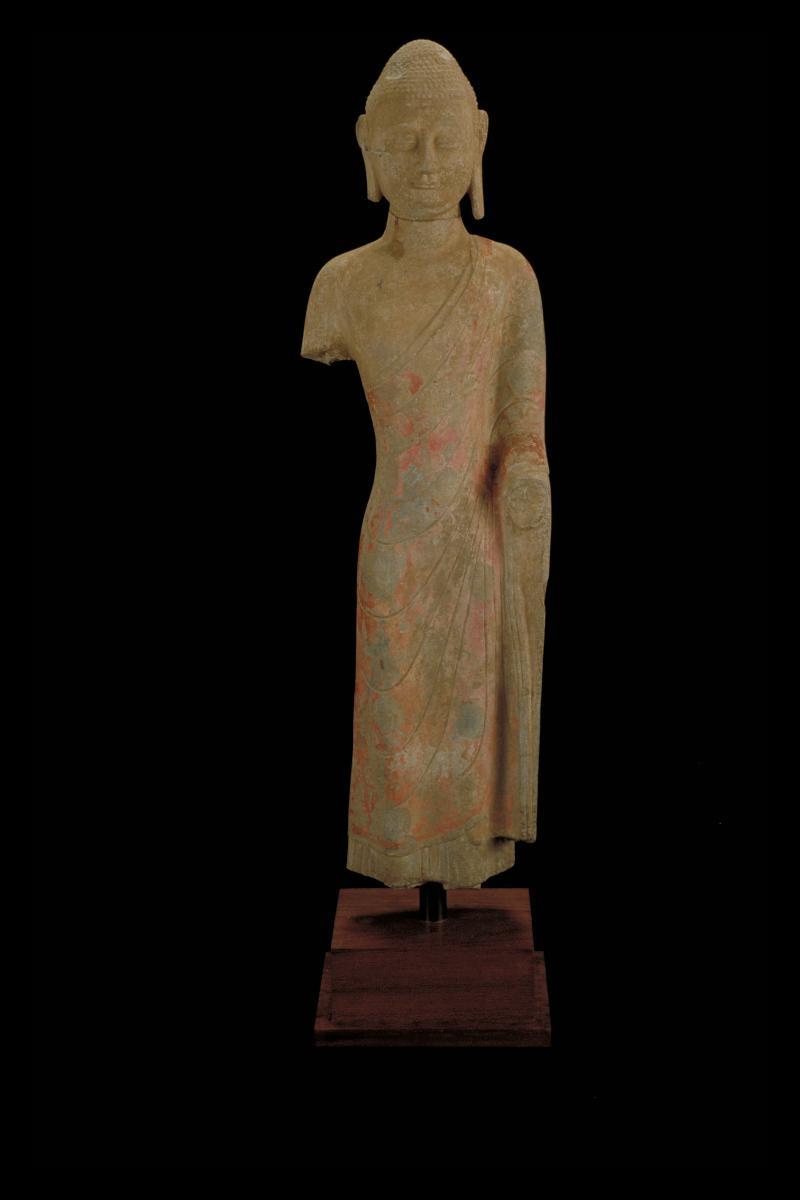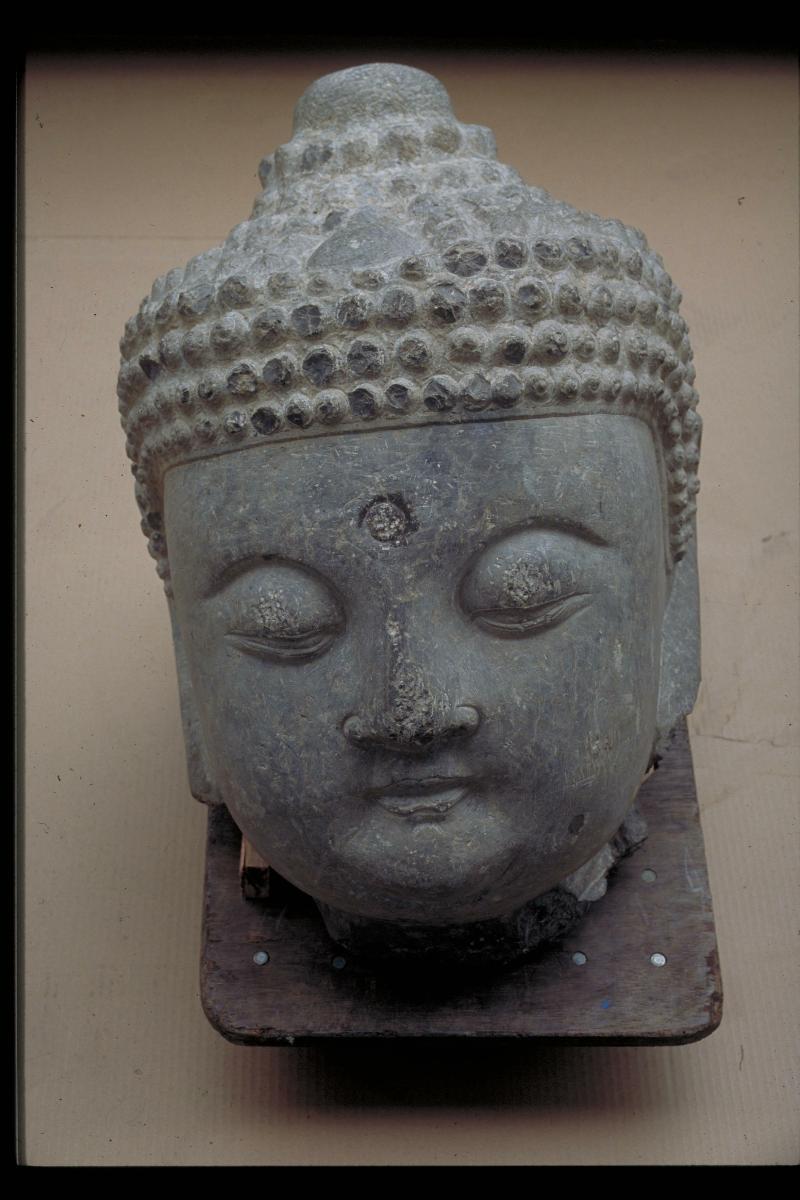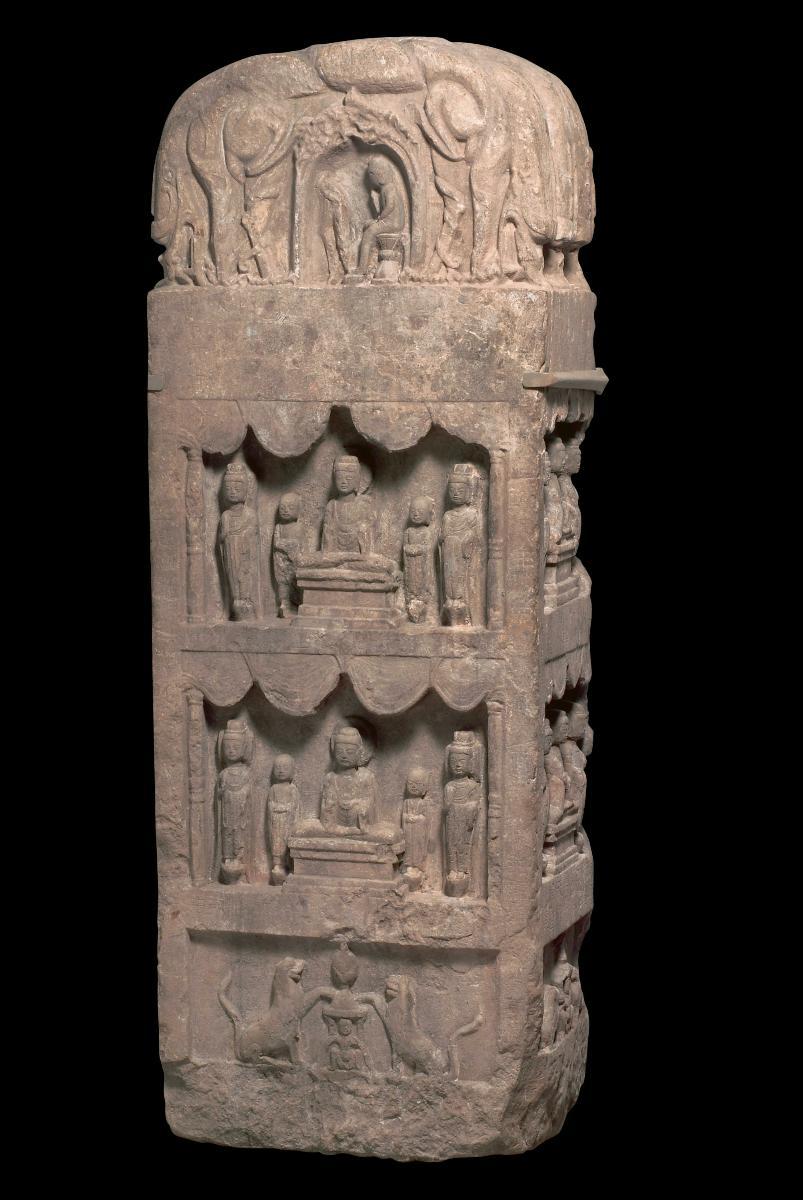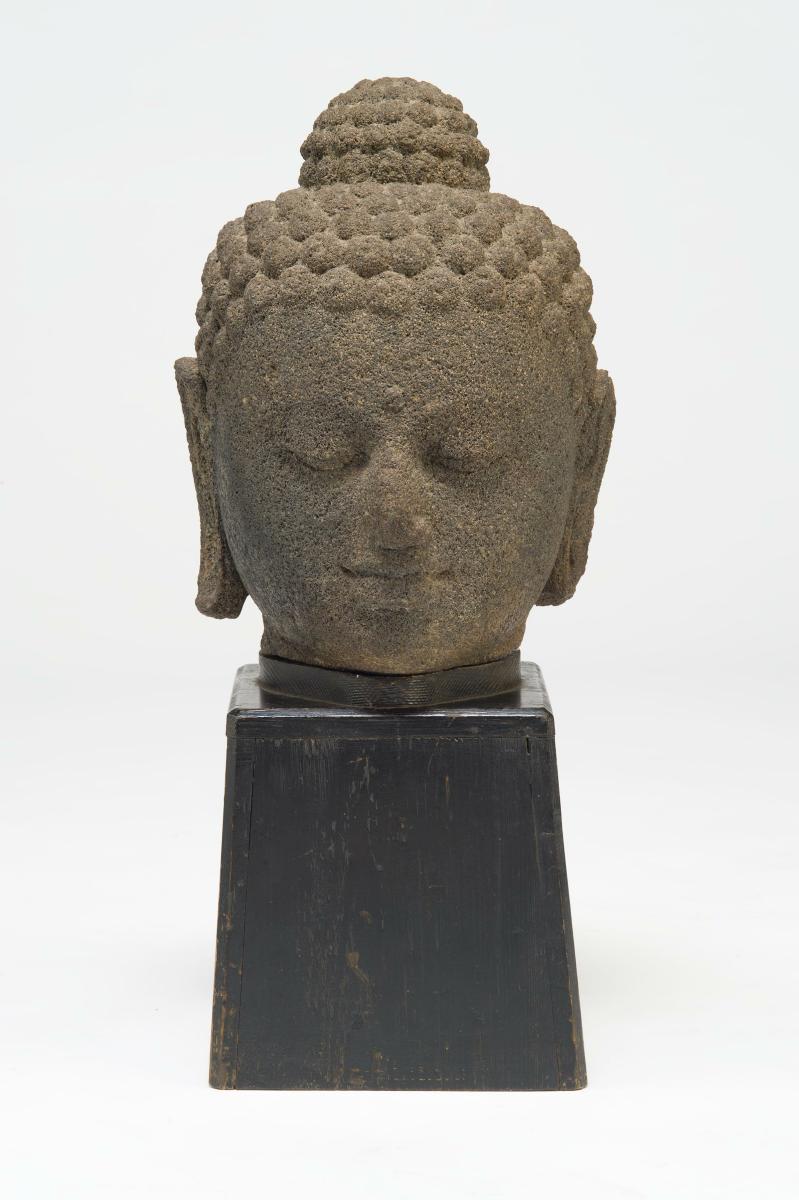A stone statue of standing Buddha in northern Qi Shandong style - the body is subtly suggested, after the Indian Gupta style, by the drapery of the monastic robe. Buddha's face is serene with a faint smile, the nose aquiline, the hair in snail-curls, his ear-lobes in exaggerated extension. The right arm is missing, but the left arm is intact except for the lower part.Buddhism was gaining great momentum in China and by this time, much of the elite in China were fervent Buddhists. The grottoes were inspired by the Indian models and commissioning the making of Buddhist images was a way to accumulate merit. The Buddhist images in Shandong tend to be confined to depiction of Buddha, but a few centuries later, the cult of bodhisattva would become more important than Buddha.















